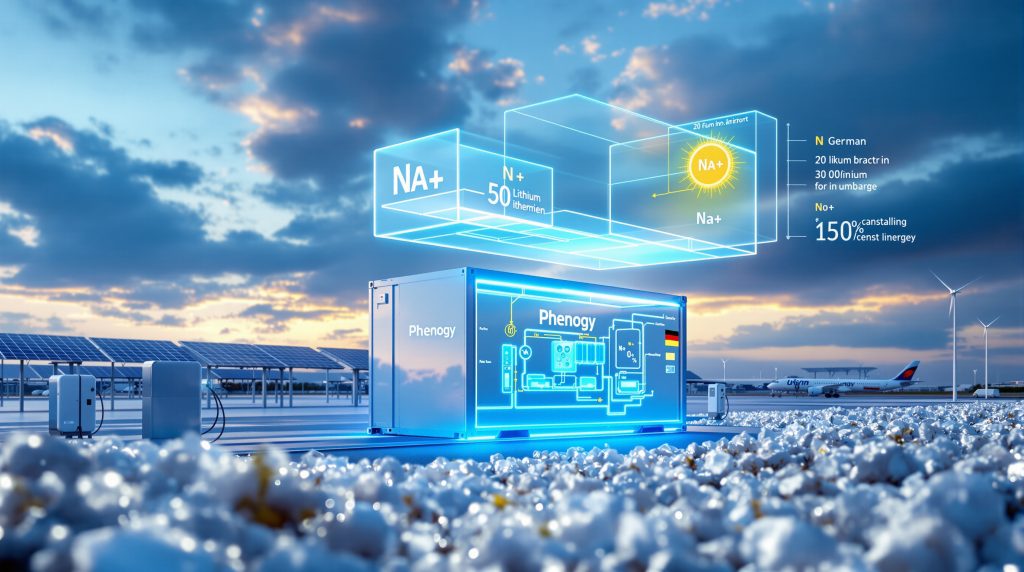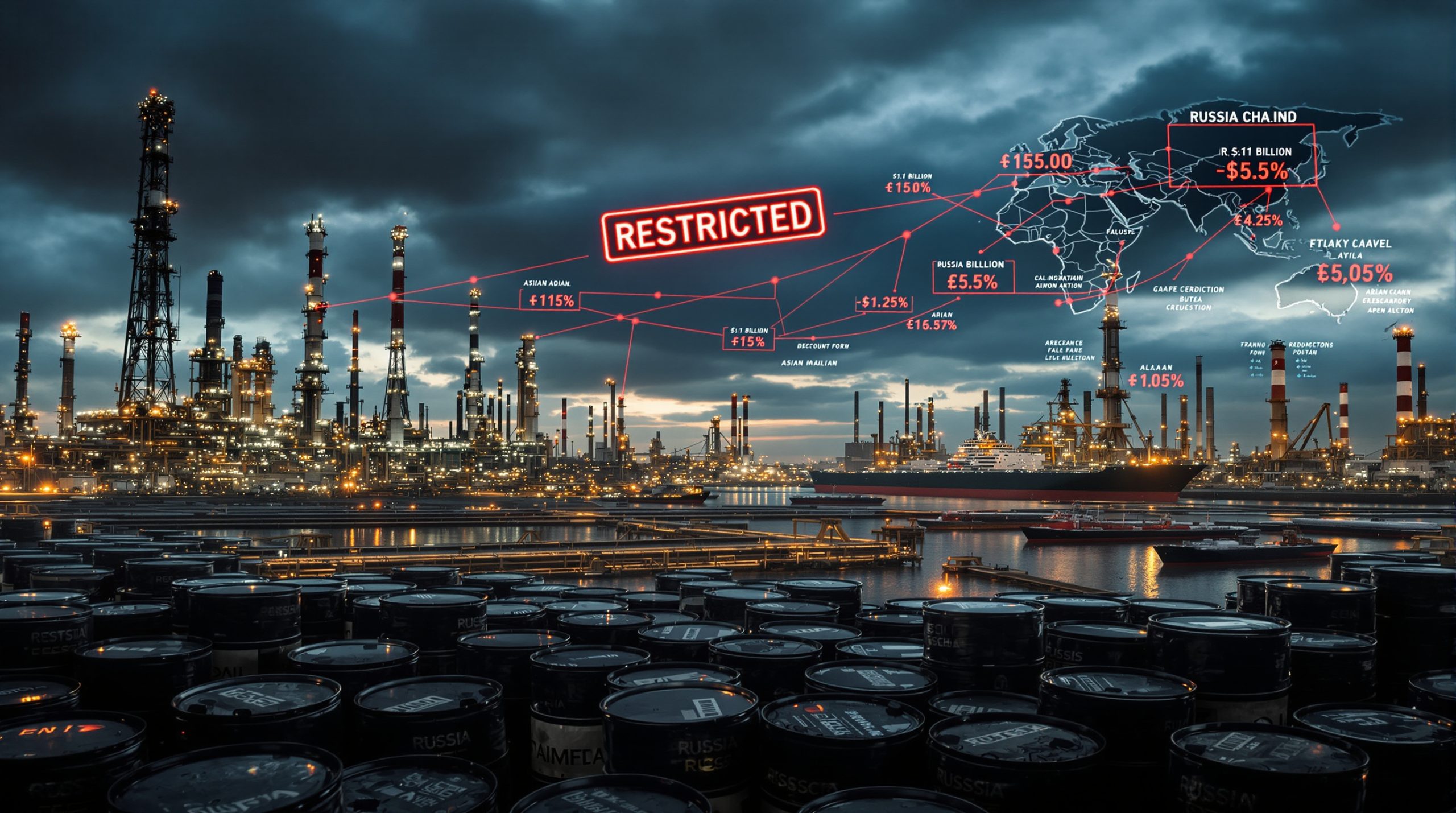Sodium-Ion Batteries: Bremen Airport's Pioneering Energy Storage Installation
As energy storage technology evolves beyond conventional lithium-ion systems, a significant milestone has been reached near Bremen Airport in northern Germany. Switzerland's Phenogy has commissioned Europe's largest sodium-ion battery installation, establishing an important foothold for this emerging technology in commercial applications. This innovative project demonstrates the practical deployment of sodium-ion technology while addressing growing concerns about critical minerals energy transition and energy security.
What Makes Sodium-Ion Technology Different?
Sodium-ion batteries leverage one of Earth's most abundant elements instead of increasingly constrained lithium resources. With sodium approximately 1,000 times more abundant in the Earth's crust than lithium, these batteries represent a promising pathway toward more sustainable and geopolitically secure energy storage solutions.
Unlike their lithium-ion counterparts, sodium-ion batteries operate across a broader voltage range, which presents both challenges and opportunities for system integration. While current energy density remains slightly below lithium iron phosphate (LFP) levels, the technology offers compelling advantages in temperature tolerance and raw material accessibility.
The technology has gained remarkable momentum in recent years as industries and governments seek alternatives to lithium-dependent supply chains that have demonstrated significant price volatility and geopolitical vulnerability.
Bremen Airport Installation: Setting New Benchmarks
The Phenogy installation near Bremen Airport delivers 400 kW of power with nearly 1 MWh of storage capacity, housed within a single 20-foot container. This system operates in island mode, optimizing on-site energy consumption while powering electric vehicle charging infrastructure.
Integrated with an existing 50 kW solar array, the installation demonstrates how sodium-ion technology can effectively support renewable energy integration in real-world commercial applications.
What makes this deployment particularly groundbreaking is its scale—representing the largest sodium-ion battery installation in Europe to date—and its commercial nature, moving beyond laboratory or pilot demonstrations into fully operational service.
The system's successful commissioning establishes an important reference point for future deployments across Europe, potentially accelerating adoption as energy storage demands continue to increase.
Technical Implementation Challenges
Deploying sodium-ion technology at commercial scale required overcoming significant technical hurdles, particularly regarding inverter compatibility. The broader voltage range of sodium-ion cells compared to conventional lithium-ion systems necessitated specialized power conversion equipment.
To address this challenge, the installation incorporates eight Sunny Island X 50 inverters from SMA within the 20-foot container. These inverters feature integrated DC-DC converters that enable greater flexibility in voltage matching—a crucial capability when working with sodium-ion chemistry.
SMA provided pre-production units of the Sunny Island X 50 specifically for this installation, making it one of the first deployments of this new product designed to accommodate alternative battery chemistries beyond the dominant lithium iron phosphate (LFP).
This technical integration demonstrates how the broader energy storage ecosystem is adapting to support emerging battery technologies, potentially accelerating commercialization pathways for sodium-ion systems.
Phenogy: Emerging Player in Alternative Battery Technology
Switzerland-based Phenogy has emerged from stealth mode with this landmark deployment, establishing itself as a serious contender in Europe's alternative battery technology landscape. Founded in 2019, the company employs approximately 60 people across Europe and the United States, with operations in Switzerland and South Carolina.
Phenogy's strategic vision extends beyond manufacturing batteries—the company aims to develop fully vertically integrated local manufacturing capabilities for sodium-ion technology. This approach directly addresses broader geopolitical concerns around battery metals investment that have become increasingly prominent in European industrial policy discussions.
The company's development has been supported through partnerships with research institutions, including:
- The University of South Carolina
- Exentis Group AG (specialists in industrial additive manufacturing)
- Several Fraunhofer Institutes
These collaborative relationships highlight the extensive ecosystem driving sodium-ion innovation forward.
PHENOGY 1.0 System Capabilities
The PHENOGY 1.0 system installed at Bremen Airport has been designed with versatility in mind, targeting multiple application segments including:
- Industrial and commercial energy management
- Grid services and infrastructure support
- Critical infrastructure backup power
- Electric vehicle charging infrastructure
- Renewable energy integration and optimization
This flexibility positions sodium-ion technology as a potential solution across diverse energy storage applications rather than limiting it to niche use cases.
Global Context: China's Advancement in Sodium-Ion Technology
While Europe makes progress with the Bremen installation, China currently leads global sodium-ion development and deployment. Chinese companies including CATL, BYD, and Huawei have driven significant technological advancement in this field, with multiple 100 MW-scale projects already operational.
Chinese deployments have demonstrated advanced integration capabilities, including hybrid systems combining sodium-ion with lithium-ion batteries and even grid-forming inverters. These large-scale installations provide valuable operational data and experience that will inform future deployments worldwide.
The Bremen Airport installation, while smaller in scale than these Chinese counterparts, represents an important step in establishing European capabilities and experience with sodium-ion technology. It demonstrates growing global interest in diversifying battery chemistry options beyond the dominant lithium-ion paradigm.
Economic Considerations for Sodium-Ion Adoption
Currently, sodium-ion systems remain more expensive than lithium iron phosphate (LFP) batteries, which have benefited from massive production scale and continuous cost optimization. However, the strategic value proposition extends beyond immediate price considerations.
As Max Kory, CTO of Phenogy, explains: "For a growing number of customers, technology choices are strategic decisions, not purely economic. The product doesn't need to be cheaper. In a world of volatile raw material prices and rising geopolitical risks, supply chain independence is critical."
This perspective highlights how energy storage procurement decisions increasingly incorporate resilience and supply chain security considerations alongside traditional cost metrics. The volatility in lithium markets has demonstrated the vulnerability of relying exclusively on a single battery chemistry, creating openings for alternative technologies like sodium-ion.
Lithium Price Vulnerability
Industry analysts note that lithium prices have shown extreme volatility over recent years, significantly impacting battery production economics. Mine closures in China and supply constraints have created periods of scarcity and price spikes that disrupt manufacturing planning.
As one industry expert explains, the market may be approaching another breaking point where alternative chemistries become increasingly attractive on purely economic grounds, not just strategic considerations. Recent battery recycling breakthrough technologies may also influence this dynamic by potentially recovering critical materials from used batteries.
Supply Chain Advantages of Sodium-Ion Technology
A key strategic advantage of sodium-ion technology lies in the potential for localized supply chains. While lithium production remains concentrated in a few regions globally, sodium is widely available across most markets. This geographic distribution could enable more resilient and regionally independent manufacturing capabilities.
However, establishing complete vertical integration remains challenging. As Phenogy's CTO notes: "Until local production of cathode and anode materials, particularly hard carbon, is established, it will be difficult to build a fully vertically integrated sodium-ion manufacturing base in Europe."
Hard carbon, a critical component for sodium-ion anodes, can be synthesized from agricultural waste products like:
- Nut shells
- Cellulose
- Other biomass materials
This creates potential sustainable and localized production pathways that avoid dependence on imported materials.
Strategic Implications for European Manufacturing
Industry experts caution against simply replicating lithium-ion manufacturing strategies for new battery chemistries. Phenogy's CTO highlights this concern: "It would be a strategic mistake to invest in large-scale LFP production in Europe today and still remain dependent on China due to the import of precursors."
This perspective reflects growing recognition that establishing technological sovereignty requires addressing the entire value chain, not just final assembly operations. The Bremen installation demonstrates how sodium-ion technology could potentially enable more comprehensive regional control over battery production.
Future Development Pathways
The Bremen installation represents an early commercial deployment rather than the endpoint of sodium-ion development. Several key trends will likely shape the technology's evolution:
-
Performance improvements: Ongoing research continues to narrow the energy density gap between sodium-ion and LFP batteries, with significant advances expected in the coming years.
-
Manufacturing scale-up: As production volumes increase, economies of scale will drive cost reductions, potentially making sodium-ion more competitive with established lithium-ion technologies.
-
Supply chain development: Establishing regional production capabilities for key materials like hard carbon will be critical to realizing the full strategic benefits of sodium-ion technology.
-
Regulatory support: Government initiatives supporting supply chain diversification and energy security may accelerate sodium-ion adoption through targeted incentives and research funding.
The technology's trajectory will depend on both technical advancement and broader mining industry innovation in the energy storage sector.
Manufacturing Challenges
Scaling battery production presents significant technical challenges, regardless of chemistry. High scrap rates in production can quickly undermine business viability, as demonstrated by the challenges faced by companies like Northvolt in Europe and Natron Energy in the US.
As Phenogy's CTO acknowledges: "The experiences of Northvolt in Europe and Natron Energy in the US show that it's hard to do this alone. Scrap rates in battery production can be high and they can quickly destroy your business."
These manufacturing hurdles highlight the importance of collaborative approaches and knowledge sharing to establish successful production capabilities for emerging battery technologies. Furthermore, AI-enhanced mining insights are beginning to transform raw material extraction processes, potentially improving efficiency and reducing environmental impacts.
European Energy Strategy Implications
The Bremen Airport sodium-ion deployment aligns with broader European efforts to establish greater technological sovereignty in critical clean energy technologies. As the continent pursues ambitious climate targets, ensuring secure access to energy storage technologies becomes increasingly vital.
In the US, similar concerns about energy security and grid reliability are driving interest in diversified battery technologies. As Phenogy's CTO notes: "In the US, we see a much stronger push for supply chain independence. They also experience more frequent blackouts and face growing electricity demand from expanding data center fleets."
This perspective reflects growing recognition that technological diversification serves both economic and security objectives in energy transition strategies worldwide. According to a recent German research project, the industrial implementation of sodium-ion technology is gaining significant government support.
Data Center Energy Demands
The explosive growth of data centers, particularly those supporting artificial intelligence applications, is creating unprecedented electricity demand in many markets. These facilities require both substantial power supply and high reliability, potentially creating new markets for energy storage technologies.
Sodium-ion batteries, with their favorable safety profiles and potentially more secure supply chains, could prove particularly valuable for these critical infrastructure applications where resilience is paramount. Australia's sodium-ion energy storage technology is also making inroads in Europe, demonstrating the global nature of this technological shift.
Remaining Adoption Challenges
Despite promising developments, several challenges must be addressed before sodium-ion technology achieves mainstream adoption:
-
Manufacturing complexity: High scrap rates in battery production can quickly undermine business viability, requiring sophisticated quality control processes and production engineering.
-
Performance trade-offs: While sodium-ion offers advantages in certain parameters, its overall performance profile still involves compromises compared to advanced lithium-ion chemistries.
-
Ecosystem development: The broader ecosystem of components, from battery management systems to inverters, must continue evolving to fully support sodium-ion's unique characteristics.
-
Market education: Customers and investors need greater awareness of sodium-ion's capabilities and limitations to make informed deployment decisions.
Addressing these challenges will require sustained investment and collaboration across the battery value chain, from materials research to system integration and deployment.
A Milestone in Battery Diversification
The Bremen Airport sodium-ion installation represents more than just a single energy storage project—it signals the beginning of commercial-scale deployment for an important alternative battery technology in Europe. As energy storage demands continue growing exponentially to support renewable energy integration and electrification, technological diversification becomes increasingly important.
While sodium-ion technology may not replace lithium-ion batteries in all applications, it offers a valuable complementary option with distinct advantages in supply chain security, raw material availability, and certain performance characteristics. The Bremen installation provides valuable real-world operational experience that will inform future deployments and technology development.
As Europe pursues greater energy sovereignty and sustainability, innovations like this sodium-ion system demonstrate how technological diversification can support both economic and strategic objectives in the clean energy transition.
Frequently Asked Questions About Sodium-Ion Battery Technology
What is the main difference between sodium-ion and lithium-ion batteries?
Sodium-ion batteries use abundant sodium instead of lithium as the charge carrier, offering potential cost and supply chain advantages while maintaining similar functional principles to lithium-ion technology.
Are sodium-ion batteries safer than lithium-ion?
Sodium-ion batteries generally offer favorable safety characteristics, with reduced fire risk compared to some lithium-ion chemistries, though specific safety profiles depend on exact cell design and system integration.
How does the energy density of sodium-ion compare to lithium-ion?
Current sodium-ion batteries typically offer energy density slightly below lithium iron phosphate (LFP) cells, though ongoing research continues to improve this parameter.
What applications are best suited for sodium-ion technology?
Stationary energy storage applications where cost, safety, and supply chain security are prioritized over maximum energy density make ideal use cases for sodium-ion technology.
Will sodium-ion batteries replace lithium-ion in electric vehicles?
While sodium-ion may find applications in certain vehicle categories where cost is prioritized over range, lithium-ion will likely remain dominant in most electric vehicles due to its superior energy density.
Disclaimer: This article contains speculative statements about future market conditions and technology development. The information provided should not be considered investment advice. Readers should conduct their own research and consult with qualified professionals before making business or investment decisions related to energy storage technologies.
Want to Spot the Next Major Mineral Discovery?
Discovery Alert's proprietary Discovery IQ model instantly notifies investors of significant ASX mineral discoveries, transforming complex data into actionable insights for both short-term traders and long-term investors. Understand why historic discoveries can generate substantial returns by visiting the dedicated discoveries page and begin your 30-day free trial today.




